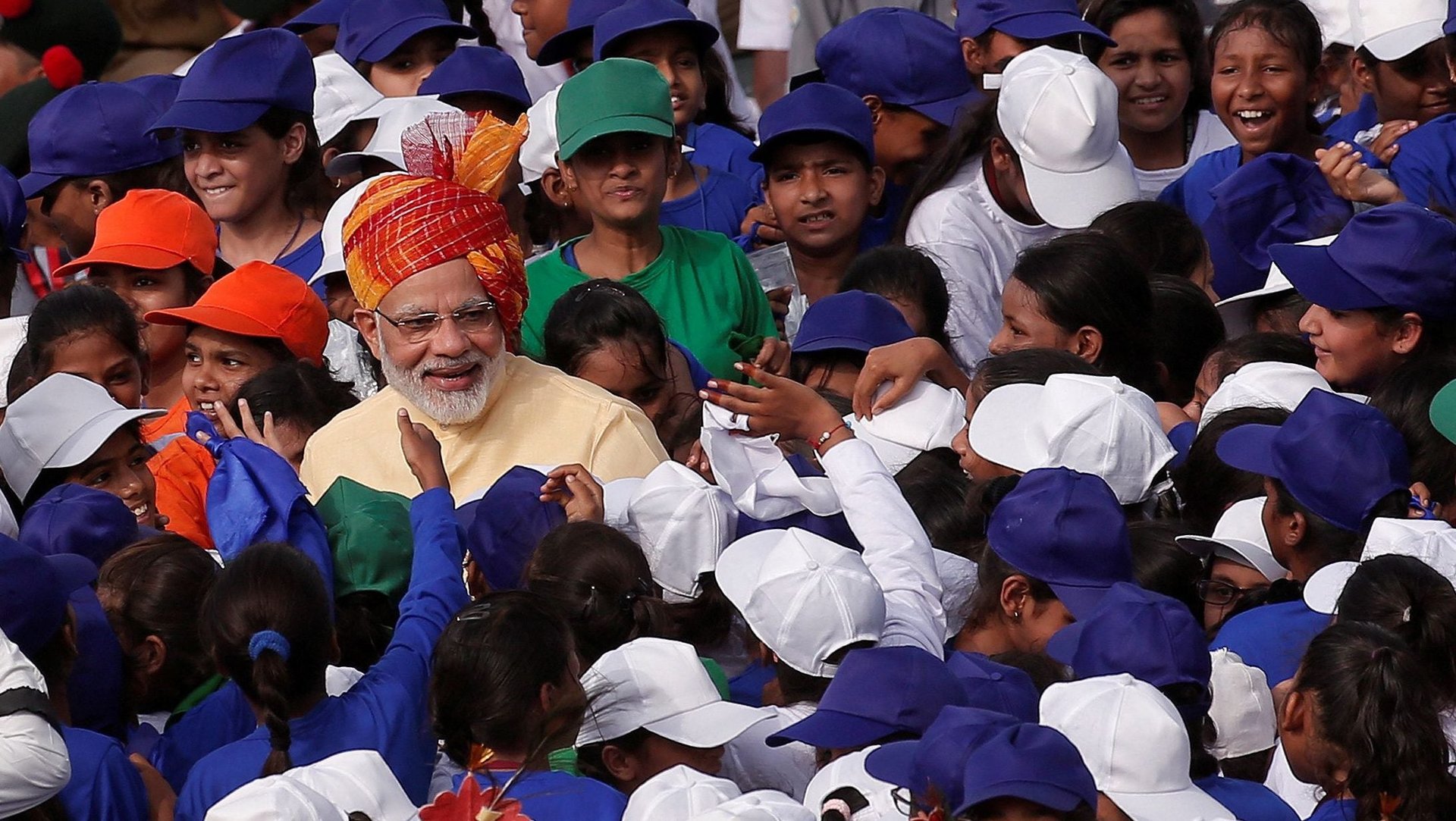Narendra Modi’s book for kids is an attempt to woo the next generation of voters
School is hard, as India’s prime minister Narendra Modi can probably attest. Modi struggled in getting his bachelor’s degree from a distance learning program, even failing in his second year.


School is hard, as India’s prime minister Narendra Modi can probably attest. Modi struggled in getting his bachelor’s degree from a distance learning program, even failing in his second year.
Yet Modi has taken it upon himself to share winning strategies with Indian students. First, in 2015, he dedicated his monthly radio program, Mann ki Baat (the mind’s voice), to students approaching board examinations. Then, early this year, he published the book Exam Warriors, available in English, Hindi, Marathi, and Gujarati.
The book—the cover of which features a cartoonish drawing of a group of kids and a rabbit riding bikes, scooters, and hover boards past a jubilant flag-holding Modi—is targeted to children preparing for the 10th- and 12th-grade exams, but it can easily be read by younger children, too.
The pages contain a combination of motivational quotes (“The present is God’s greatest ‘present’,” “Exams test your current preparation, not you!”), playful exercises, catchy mantras (such as “do your best, take adequate rest,” “revise and become wise,” or “cheat is cheap”), and an illustrated, kid-friendly yoga manual.
The tips shared in the book may or may not be effective in helping kids achieve academic excellence. But the book surely accomplishes the task of pulling young readers into the patriotic, Hindu-first vision of India that has propelled Modi to power.
The examples and metaphors peppered throughout the book fit perfectly into Modi’s preferred narrative of India. Children are “warriors.” Exams are like festivals. Role models aren’t academic achievers, but military ones (including APJ Abdul Kalam, the father of India’s nuclear program).
When Modi was eight, he joined Rashtriya Swayamsevak Sangh (RSS), the large Hindu nationalist, paramilitary volunteer association. And so it’s no surprise that he has been attentive to the importance of his image among his future class of voters, providing schools with ample literature about himself. He dedicates Exam Warriors to the youth of India—the largest young population in the world, with 650,000 people under age 25, and tasks them with the responsibility of manifesting the New India brand behind his political message.
Branching out of exam territory, the book also mentions government projects to promote India’s greatness, such as “Ek Bharat Shreshtha Bharat” (“One India Great India”), and encourages the young readers to travel through India, just like Modi did after high school. “Do not forget to share a picture with me, using #IncredibleIndia,” Modi writes.
Exam season is now nearly over. But the book is still displayed prominently in bookstores. It is also kept in piles by the cashier counters in airports, should incoming visitors want to acquaint themselves with Modi’s study tips. There’s even an app you can download to access the book’s interactive exercises: The Narendra Modi app, of course.